With AI computing rapidly advancing, data center network infrastructures are under increasing pressure. At GTC 2025 on March 18, 2025, NVIDIA unveiled its revolutionary silicon photonics technology, replacing traditional pluggable optical transceivers with co-packaged optics (CPO).
This breakthrough connects optical fibers directly to switches, reducing data center power consumption by an estimated 40 megawatts and greatly enhancing network efficiency for AI computing clusters.
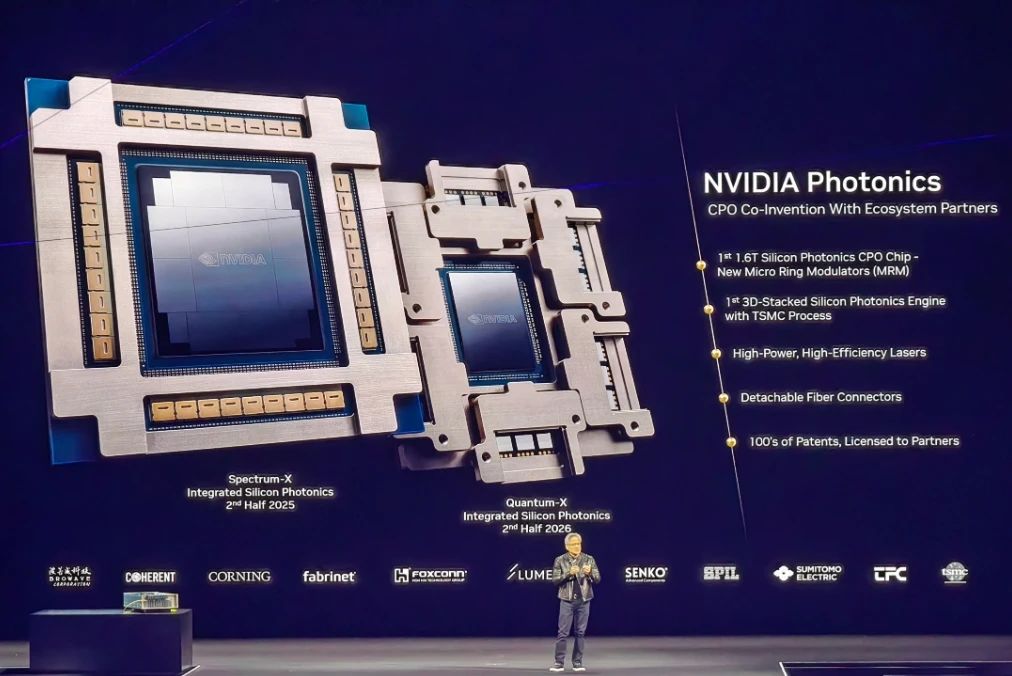
NVIDIA’s Silicon Photonics CPO Switches
NVIDIA launched two significant silicon photonic network switches, which leverage this innovation:
Spectrum-X Ethernet Platform: Tailored for multi-tenant, hyperscale AI factories, it delivers 1.6 times more bandwidth density than traditional Ethernet architectures, enabling advanced supercomputing infrastructures.
Quantum-X Photonics InfiniBand Platform: With 200Gbps SerDes technology, this platform boasts 144x800Gbps ports and liquid-cooled silicon photonics components. It doubles AI computing speed and enhances scalability by five times compared to prior generations.
Spectrum-X Switch Architecture
Spectrum-X photonic switches come with several configurations:
Up to 128 x 800Gb/s or 512 x 200Gb/s ports, achieving a total bandwidth of 100Tb/s.
Higher-end models offer up to 512 x 800Gb/s or 2048 x 200Gb/s ports, delivering up to 400Tb/s throughput.
The Spectrum-X CPO chip uses a multi-chip design, including a central Ethernet switch ASIC surrounded by eight SerDes chips and additional processing components for superior network performance.
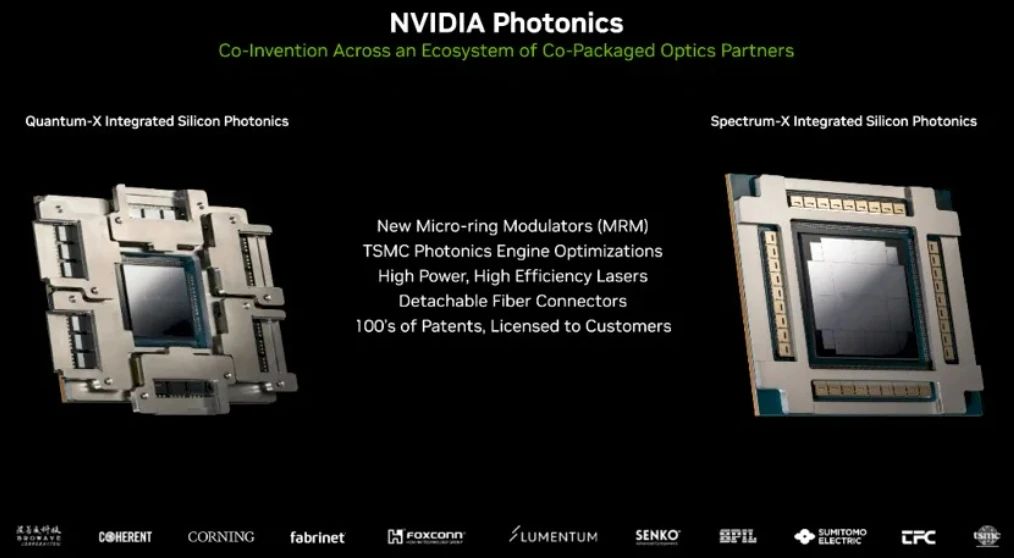
Quantum-X Switch Architecture
The Quantum-X photonic switch delivers a total of 115.2Tb/s throughput with two CPO modules. Each module houses a Quantum-X800 ASIC and six optical components, including 18 silicon photonic engines.
The Quantum-X800 ASIC, built on TSMC’s 4N process, integrates 107 billion transistors, providing 28.8Tb/s throughput.
By utilizing 200Gb/s micro-ring modulators (MRM), Quantum-X achieves a 3.5x reduction in power consumption compared to traditional technologies.
The switch incorporates 144 MPO single-mode fiber connectors, each featuring eight CW-DFB laser sources for automatic temperature tracking and stable wavelength output.
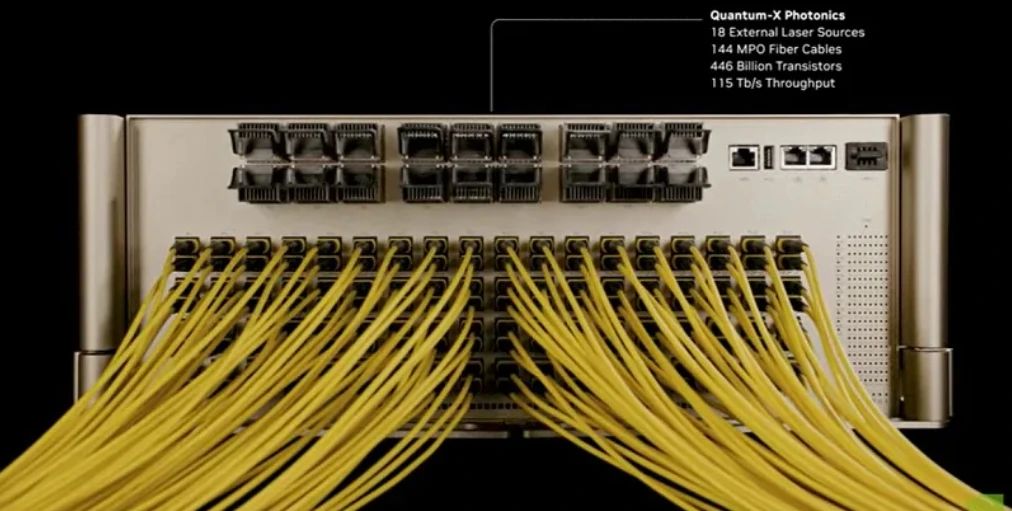
Advantages of CPO Technology
Enhanced Performance: CPO reduces latency and increases bandwidth, making it ideal for AI clusters.
Energy Efficiency: Eliminating the need for separate DSP chips results in significant power savings.
Optimized AI Network Bandwidth: CPO minimizes signal conversion losses, improving overall network efficiency.
Key Innovations in CPO
NVIDIA’s CPO leverages micro-ring modulators (MRM) to boost energy efficiency.
Broadcom’s CPO, based on Mach-Zehnder Modulators (MZM), offers up to 50% energy savings.
The 3D-stacked packaging design and TSMC’s Compact Universal Photonic Engine (COUPE) enhance integration and performance.
Challenges Facing CPO Adoption
Fixed Configuration Constraints: Unlike pluggable modules, CPO modules are not easily replaceable, meaning full system replacements are required in case of failure.
Market Acceptance: Despite the benefits, pluggable optical modules remain the industry standard due to their flexibility and maturity.
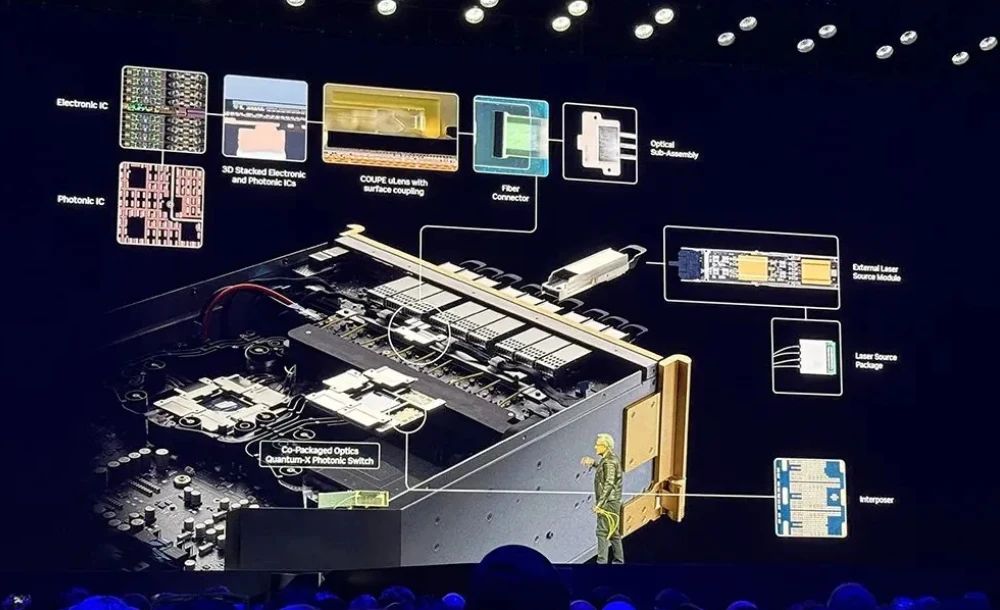
Future Market Outlook
NVIDIA’s Role in Driving CPO Adoption: As AI computing demands accelerate, the shift toward CPO-based networks will grow.
Hybrid “CPO + Pluggable” Model: Initially, CPO deployment will be limited to large-scale AI clusters. In the long term, as bandwidth demands increase, CPO is expected to become more mainstream.
Industry Trends and Future Prospects: A hybrid architecture combining CPO and pluggable optics may emerge, offering greater deployment flexibility.
As CPO technology matures, it is set to play a crucial role in the next generation of AI data centers, transforming data center connectivity with unprecedented performance and integration.
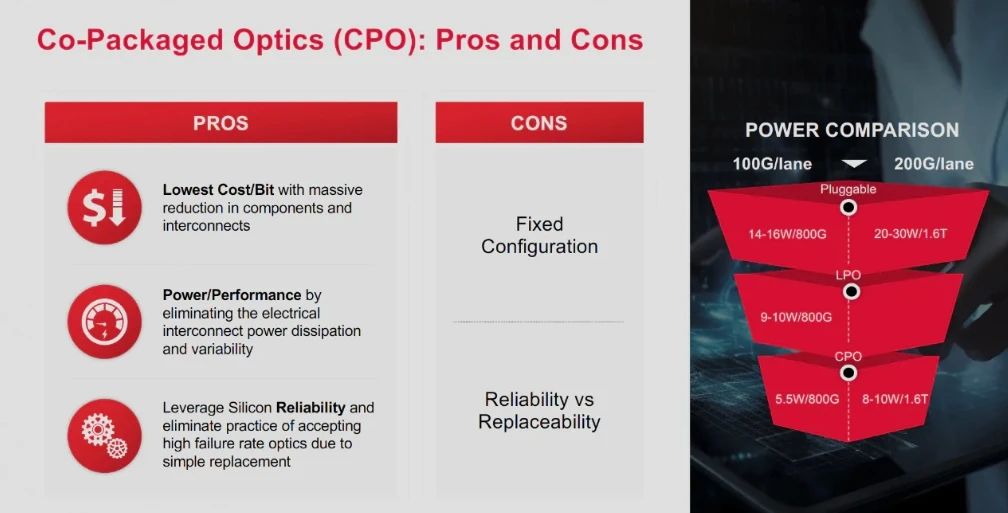
Conclusion
NVIDIA’s introduction of 1.6Tb/s silicon photonics CPO switches marks a pivotal step in data center networking evolution.
CPO technology promises to reduce power consumption, improve scalability, and enhance efficiency, reshaping the future of AI infrastructure.
Although pluggable optical modules remain the dominant choice, CPO is poised to revolutionize data center connectivity.
Reference Link: NVIDIA’s Silicon Photonics CPO: The Beginning of a Transformative Journey in AI


 MCU Solutions
MCU Solutions PCBA Solutions
PCBA Solutions Bluetooth Solutions
Bluetooth Solutions
 FAQ
FAQ Contact Us
Contact Us
 Company News
Company News Technology News
Technology News Industry News
Industry News PCBA News
PCBA News
 Company Profile
Company Profile Certificates
Certificates Terms & Conditions
Terms & Conditions Privacy Statement
Privacy Statement
 Home Appliances
Home Appliances Beauty Appliances
Beauty Appliances Lighting
Lighting Kid's Toys
Kid's Toys Security Alarm
Security Alarm Health Care
Health Care







 More information?
More information?






